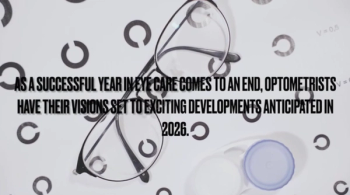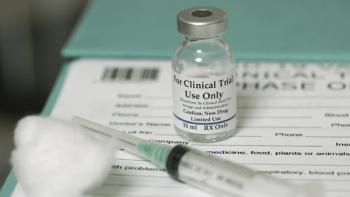
Why not daily disposables?
When asked which is the safest mode of contact lens wear, most doctors reply, “daily disposables.” When asked which is the most convenient mode of lens wear, most doctors reply, “daily disposables.” When asked which is the most comfortable mode of lens wear, most doctors reply, “daily disposables.”
When asked which is the safest mode of contact lens wear, most doctors reply, “daily disposables.” When asked which is the most convenient mode of lens wear, most doctors reply, “daily disposables.” When asked which is the most comfortable mode of lens wear, most doctors reply, “daily disposables.” Therefore, one would surmise that the largest percent of contact lens fits in this country would be daily disposables. We know that is not the case because optometrists are utilizing this modality for about only 12% of patients.1
The real question is why optometrists in the US have not embraced this modality as their primary choice. I believe that this can be answered in one word: perception. We have become too complacent in our prescribing habits. We have let the patient control the situation.
Most importantly, we have let perceived costs interfere with recommending what is best to our patients. We have a sense that certain patients cannot afford certain options in our practice. Many practitioners do not recommend these options because they falsely think they are helping their patients. However, this is causing more harm than good.
Our patients are coming to us for our professional recommendations on what is in their best interests. We need to be thorough in our exam and recommend the best possible devices and procedures for the patient’s lifestyle and eye health. Patients will not hesitate to tell us if they cannot afford 1 or more of our recommendations.
But we need to educate them about what we feel is the best for their eyes. Making sure that the patient is well educated and placing value on the recommendation is most important. When the patient perceives the value of our recommendation, he will often find a way to go along with it.
US behind in daily disposable use
Philip Morgan publishes an international survey on lens prescribing every year, and it shows a very different picture of the US market compared to the rest of the world. While the daily disposables account for just 12% of fittings in the US, the lenses account for 42% of the market in Australia; 58% of the market in Denmark; and 38% of the market in the United Kingdom.1
However, this is rapidly changing because doctors in the US are now starting to embrace daily disposables, and the percentage of fits is rising rapidly. Contact lens manufacturers are emphasizing daily disposables and are expanding their inventories to include toric and multifocal designs.
New materials have been developed with exciting technology to help keep our patients in lenses for longer periods. Comfort and convenience have been the 2 most quoted reasons for contact lens dropouts. Stem this loss by switching patients to a modality of wear which provides better end-of-day comfort, less hassle, and even more wettability.1
Budget smart
To be more effective in switching patients to daily disposables, we must address the perception of “they are too expensive.” I like to show the comparison of the actual yearly cost of what the patient is currently using to the cost of switching.
For example, if the patient is wearing a 2-week disposable, I say, “The cost for your 8 boxes for the year is about $300, and you use about $120 a year in solutions for a cost of $420. What if I told you that you could wear a lens, which you could throw out every day and not have to clean, and get that fresh new lens feel every day for about the same price?”
I have 90% of the patients choose daily disposables after this discussion. We have to be excited in our recommendations and must believe in these products for this to translate. We have so many different lenses to use that if one doesn’t feel quite right to the patient, don’t hesitate to try another.
Doing what is best for the patient almost always ends us being better for the practice. By using daily disposables, we are creating patients who are more compliant, more comfortable, and will stay in contact lens wear longer.1 All these factors increase practice revenues. Service fees are where most of the profit is for a practice, so getting the patient to return more often will help the bottom line. Patients who are excited about their lenses are very willing to recommend contact lens wear to their friends and family, building referrals.
Daily disposable candidates
Who are the best candidates for daily disposables? If you are not using much of this modality, I recommend starting with specific types, such as teens. Younger patients have always been suspect in their compliance and care habits. Parents are keenly aware of these deficiencies and are more than willing to pay a little more for a type of lens which we can tell them will be easy for their child. If you have a group of patient who are active in water sports, they are perfect candidates. Once you have success with these groups, it is easy to see the benefits for most patients. I am excited at the expansion in lens types and materials. Having an array of multifocal designs will help this modality really fly.
Get on the bandwagon, and help your patient and your practice.ODT
References
1. Efron N, Morgan PB, Woods CA, et al. An international survey of daily disposable contact lens prescribing. Clin Exp Optom. 2013 Jan;96(1):58-64.
Newsletter
Want more insights like this? Subscribe to Optometry Times and get clinical pearls and practice tips delivered straight to your inbox.













































.png)


